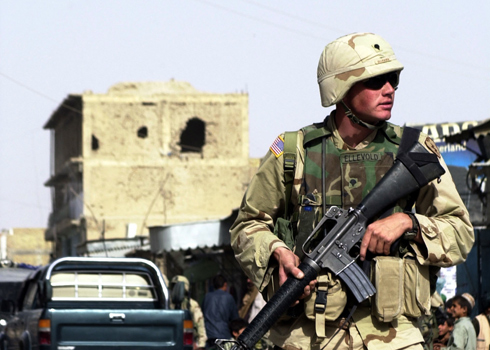In a matter of months, the Air Force hopes to start using a new airborne surveillance system called Gorgon Stare, which officials say will give soldiers the ability to monitor activity in real time across an entire city.
“Gorgon Stare will be looking at a whole city, so there will be no way for the adversary to know what we’re looking at, and we can see everything,” Maj. Gen. James O. Poss, the Air Force’s assistant deputy chief of staff for intelligence, surveillance and reconnaissance, told The Washington Post.
While drones currently in use employ a single camera, the Gorgon Drone system will use nine cameras, shooting film at a slower speed, but able to stitch all the images together. According to the Post, the upshot is that a soldier on the ground will be able “to receive any portion of a panoramic view in real time, streamed to a portable device about the size of an iPad.” Up to 65 different images will be able to be sent to different users. Each “pod” will cost $17.5 million and weigh 1,100 pounds, and it appears that some of the technology used was inspired by television:
[The Air Force] is working with Harris Corp. to adapt ESPN’s technique of tagging key moments in National Football League videotape to the war zone. Just as a sportscaster can call up a series of archived quarterback blitzes as soon as a player is sacked on the field, an analyst in Afghanistan can retrieve the last month’s worth of bombings in a particular stretch of road with the push of a button, officials said.
The Air Force placed a contractor on the set of a reality TV show to learn how to pick out the interesting scenes shot from cameras simultaneously recording the action in a house. And taking a page from high-tech companies such as Google, the Air Force will store its reams of video on servers placed in used shipping containers in Iowa.
“If you look into the not-too-distant future, what these technologies will allow us to do is remove more and more ground forces and replace them with sensors where we normally would have to rely on people going somewhere to find something out,” retired Lt. Gen. David A. Deptula said.
But others warned the Post that the military will need to find a way to sift through all the images produced fast enough to use them effectively. And Poss cautioned that the new technology would “never denigrate the need for good, solid human intelligence because even watching an entire city means nothing unless you can put context to it.”
Read the rest here.










